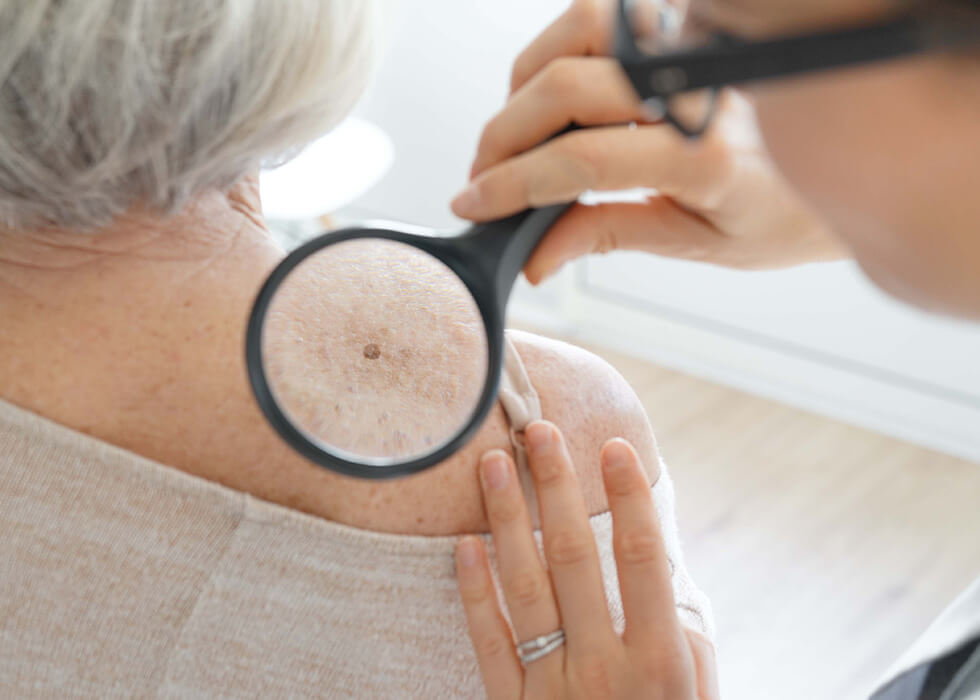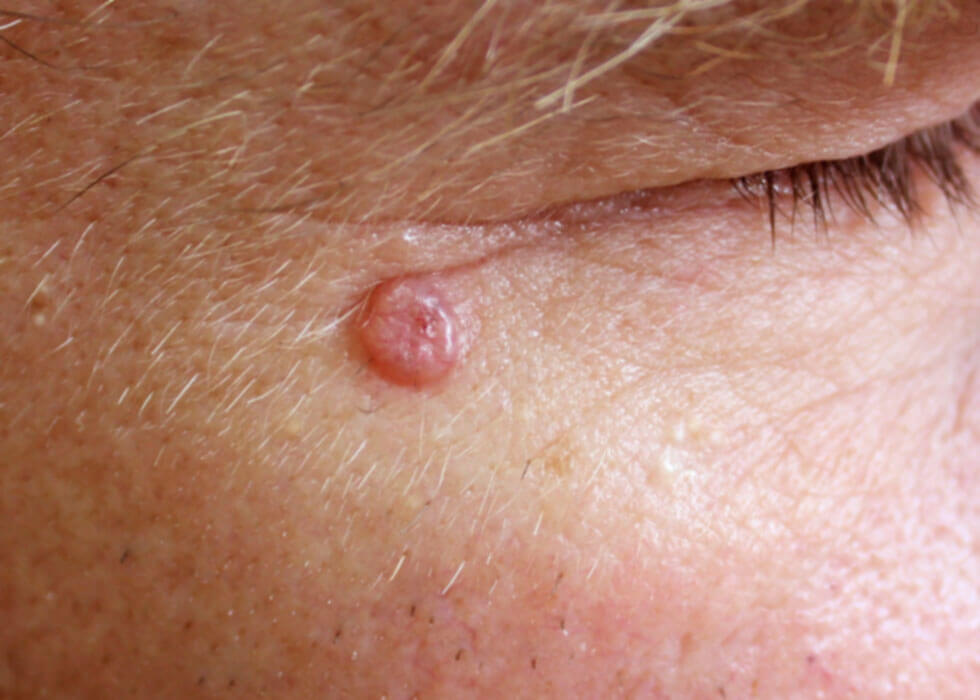Basal Cell Carcinoma
Basal Cell Carcinoma is the most common type of skin cancer. Almost all basal cell carcinomas occur on parts of the body most exposed to the sun such as; face, ears, neck, scalp, shoulders, and back.
Symptoms
Basal cell carcinoma is rarely fatal and doesn’t typically spread. People at highest risk tend to have fair or light-colored skin, a history of sun exposure and a tendency to sunburn quickly. The appearance of basal cell carcinoma can vary greatly, but here are some possible signs that you may need to see a dermatologist:
- Dry, red patch of skin that doesn’t get better
- A pink, red or brown flesh-colored round lump
- A spot that looks like a pimple but doesn’t get better or heal
- Spot or sore that bleeds, goes away but then returns in same spot
- Scar that feels waxy — may be skin-colored, white, or yellow
- Group of shiny pink or red spots that look like sores, often scaly and bleed easily
- Flat or sunken growth — feels hard, may be white or yellow

Treatments
The goal of treatment for basal cell carcinoma is to remove the cancer completely. The type of treatment depends on the type, location and size of your cancer, and whether this is a first-time or recurring basal cell. Effective treatments include:
- Surgical excision
- Mohs surgery
- Curettage and electrodessication (C and E)
- Freezing
- Topical and photodynamic therapies

Meet our Medical Providers
- Robert H. Huff, MD, FAAD Avon, Lebanon
- Ryan K. Brashear, MD, FAAD Greenwood
- Christopher M. Bohyer, MD, FAAD Greenwood, New Castle
- John B. Stephens, MD, FAAD Fishers, Greencastle, Hazel Dell
- Alison Launhardt, MD, FAAD Carmel, Tipton
- Kathleen Hanover, MD, FAAD Carmel
- Lisa Trivedi, MD, FAAD Carmel
- Honglin Xiao, MD, FAAD Fishers, Greenwood
- Janelle M. Tabet, PA-C Greenwood
- Cassandra (Cassie) M. Sexson, PA-C Greenwood, Shelbyville
- Andrew Burns, PA-C Greencastle, Hazel Dell
- Stephanie Burns, PA-C Greenwood, New Castle
- Michaela Wehr, PA-C Avon, Lebanon
- Samantha Kitcoff, PA-C Fishers
- Christina Raynor, FNP-C Avon
